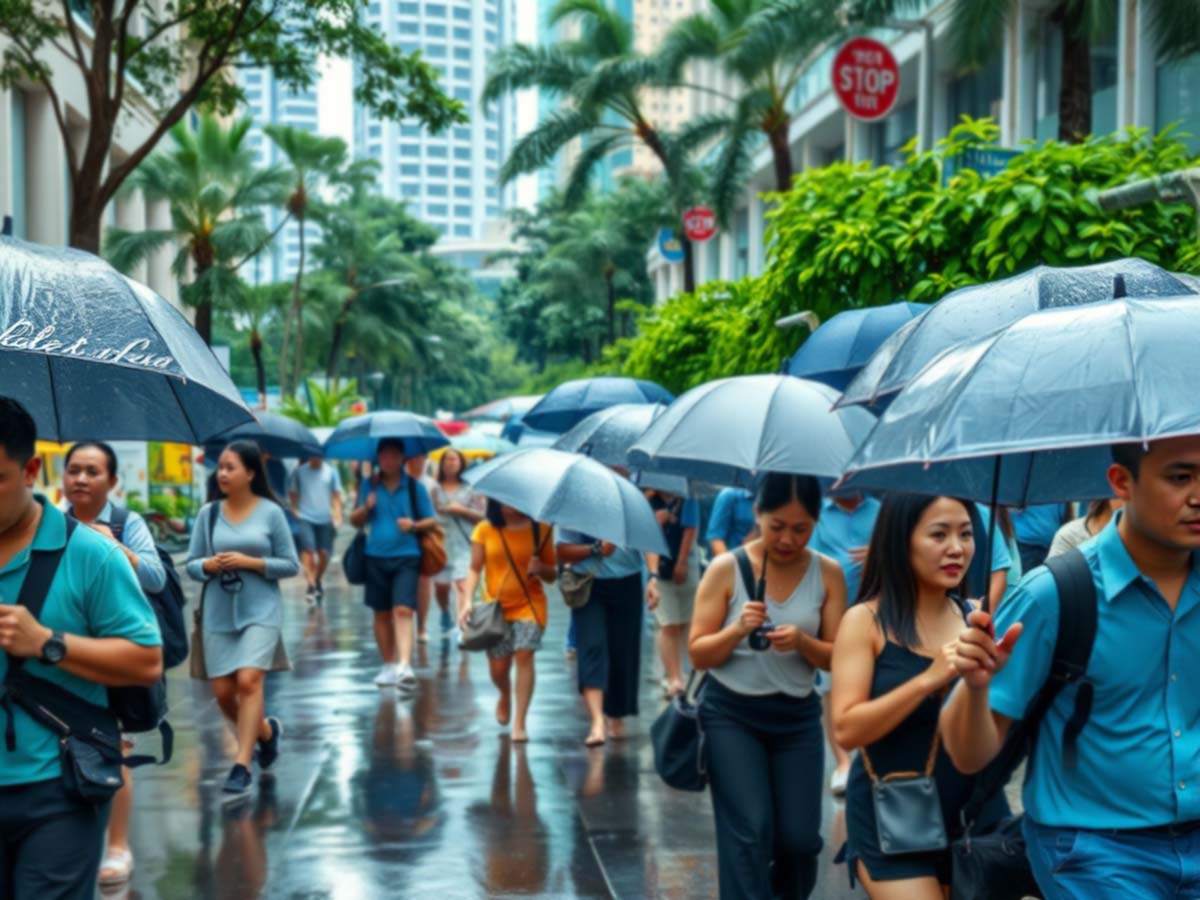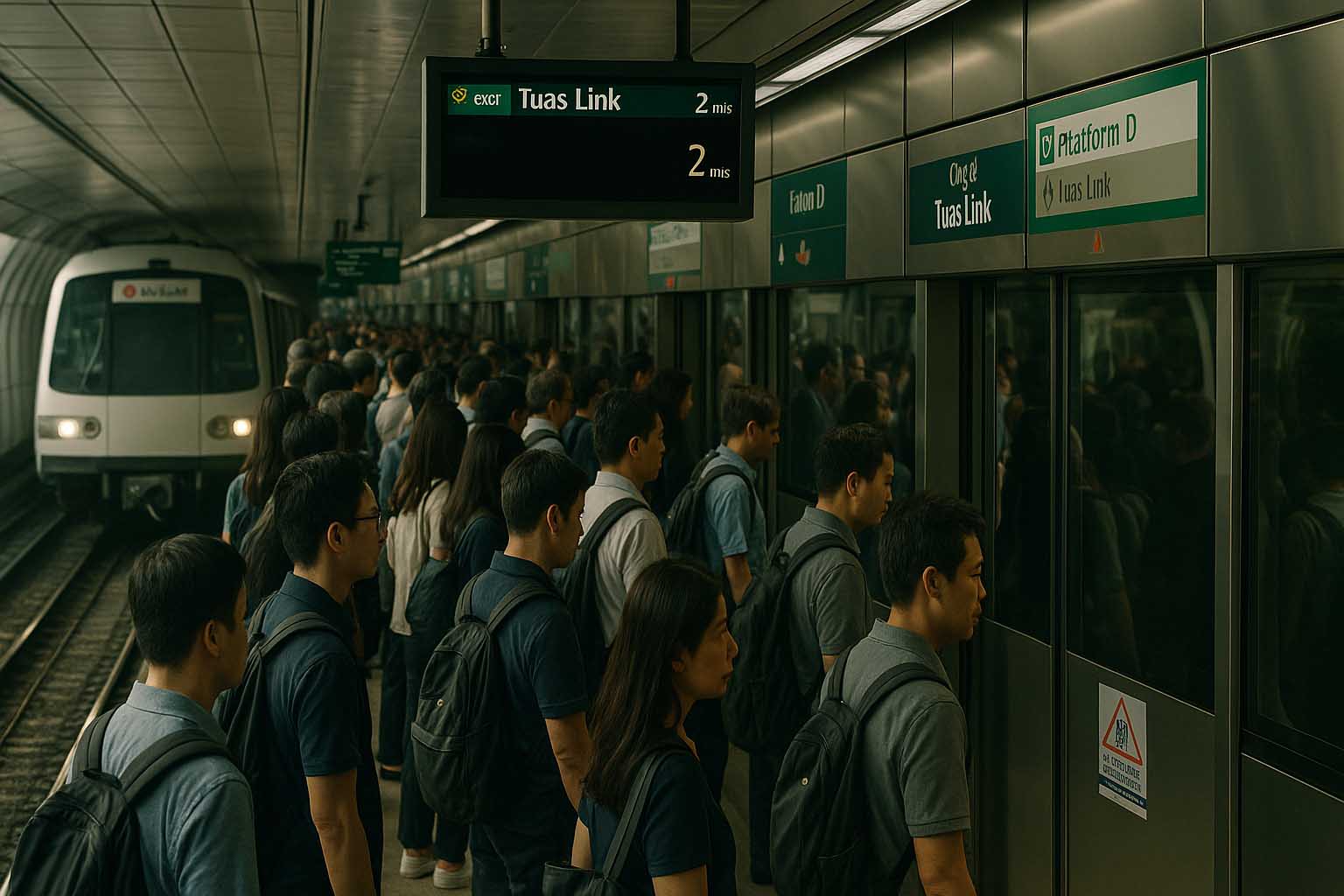How Rain Shapes City Life
Have you ever noticed how rain transforms our surroundings? Rain affects everyone in the city. It makes the air fresher and brings challenges that touch daily routines. Whether you are a social media user, a business owner, or a content creator, understanding the effects of rainfall on urban areas can make a real difference.
Impacts on Transportation
Heavy and steady rain alters the normal rhythm of urban transportation. City roads become slick, forcing drivers to lower their speed. This can lead to a slowdown in traffic and even the closure of some roads if conditions worsen.
Traffic Delays and Safety Concerns
When rain pours, drivers become more cautious. Slippery roads increase the risk of accidents. In crowded urban areas, even a light rain may trigger unexpected traffic congestion. In cities with limited drainage, water may accumulate on the streets, obscuring lane markings and causing confusion among motorists.
The demand for taxi services or ride-hailing apps often rises during rainy weather. Many people prefer not to walk in the wet conditions. A delay in transportation can then lead to longer waiting times and a rise in travel costs.
Disruption of Public Transport
Some cities rely on robust systems like buses, trains, and subways. Heavy rain and flooding force operators to slow down or stop services temporarily. When the water level exceeds safe limits on train tracks or bus routes, trips are canceled, and commuters face delays.
This disruption can affect workers who rely on public transport to reach their jobs. In areas that heavily depend on a punctual transit schedule, even short delays can interrupt daily routines and hamper business activities.
Safety in the Urban Environment
Rain brings more than just wet roads. It has a direct impact on the safety of everyone who lives and works in the city.
Rising Flooding and Road Dangers
Floodwaters can creep into roads and public spaces swiftly. In some cases, residents may not realize how deep the water is until it is too late. Local authorities may close dangerous streets, but not every location receives timely warnings. In areas near steep slopes or loose soil, heavy rain can trigger landslides. Such events put pedestrians and drivers at risk.
Damage to Infrastructure
Rain can wear out urban infrastructure. Continuous exposure to water degrades asphalt on roads and may create potholes. These potholes, once formed, require long periods and significant funds to repair. The infrastructure of older buildings may also suffer from leaks and water damage. A quick fix might not be enough, and repair costs can add up, affecting both government budgets and private homeowners.
Environmental Effects
Rain has a bright side, too. It cleans the air and gives much-needed relief on hot days. In a busy city with many cars and factories, rain can lower air pollution by washing away dust and harmful particles.
Air Quality Improvements
After a heavy shower, many people notice the air feels cooler and fresher. Tiny dust particles and pollutants are washed from the air by the rain. This natural cleaning process can be particularly beneficial for those who suffer from respiratory conditions.
Challenges with Waste Management
While rain cleans the air, it can also cause problems with waste disposal. Cities with clogged drains see water mixing with garbage, which may lead to public health concerns. Overflowing trash can block drainage systems, causing further flooding and even spreading contaminants to nearby areas.
Effects on Buildings and Urban Structures
The direct impact of heavy rain is not limited to streets and air; it also challenges the building structures that form a city.
Damage to Roads and Pavements
Persistent rain can wear down road surfaces, making travel more hazardous. Cracks and potholes develop quickly when roads are battered by water. This poses a risk for accidents and demands expensive maintenance work by city officials.
Maintenance Costs for Buildings
Many older buildings face issues such as leaky roofs and weakened walls during heavy rain. This forces both homeowners and commercial establishments to invest in frequent repairs. A small leak may turn into a severe water damage problem that disrupts daily business operations.
Stress on Power and Communication Lines
Strong rainfall sometimes leads to damage to power lines and communication networks. When trees fall or wind accompanies rain, utility poles can break. Such damage not only disrupts electrical supply to hospitals and schools but may also interrupt phone lines and the internet. The loss of communication in an emergency compounds the risk for affected residents.
Impact on the Local Economy
Rain affects more than just travel and safety—it also touches economic activities across the city. Businesses experience both setbacks and boosts during rainy weather.
Changing Shopping Patterns
Many stores and restaurants see a drop in customers when the sky is overcast and wet. People often stay inside during heavy rainfall, which leads to less foot traffic in malls and markets. For merchants, this translates into lower daily sales.
- Retail stores that offer rain gear, umbrellas, or waterproof clothing can see a surge in sales.
- Food delivery businesses may face a rise in orders as more people opt to dine indoors.
- Cleaning service providers benefit from an increased need for home maintenance on rainy days.
Even a small drop in physical store visits can lead to a ripple effect across the local economy if the weather persists for a long time.
Support for Niche Markets
Some business sectors actually prosper in the rain. Vendors selling warm beverages or comfort foods often notice an increase in their clientele. People seek the warmth of a cup of hot soup or coffee as the weather turns cold and wet. Similarly, services like laundry pickup gain popularity when outdoor drying becomes difficult.
Effects on Delivery and E-Commerce
Many consumers now prefer ordering online during rainy periods. With concerns over getting wet or facing traffic delays, online shopping becomes a convenient alternative. This change in behavior offers a boost to e-commerce platforms and food delivery services. As a result, urban delivery networks experience growing demand, which in turn reshapes local commerce.
Health and Community Wellbeing
Rainy days carry health implications for urban residents. Some effects are positive, while others may pose risks.
Risk of Infections and Allergies
When water mixes with street grime and stagnant puddles form, the conditions may favor the spread of infections. Diseases that spread through contaminated water can become a threat in areas with poor sanitation. In addition, mosquitoes breed quickly in these puddles, which may lead to outbreaks of illnesses in certain regions.
In some cases, public health campaigns focus on proper sanitation and safe waste management to prevent the spread of diseases. Residents are advised to take precautions and maintain personal hygiene, especially when water quality is compromised.
Positive Aspects for Mental and Physical Health
After a long period of heat, the cool air during and after rain brings relief. Many people find comfort in the rhythmic sound of raindrops hitting rooftops. This soothing effect can help some feel more relaxed and even sleep better. Indoor activities become a chance for families to bond and plan future projects when the sky clears.
Community Preparedness and Response
Cities are not passive in the face of heavy rain. Urban planners and local groups work together to minimize the negative impact. Their combined efforts make a significant difference during periods of wet weather.
Planned Infrastructure Improvements
Across the globe, several cities have reworked their drainage systems and improved flood control measures. Projects such as enlarging drainage channels and building water retention structures help manage sudden downpours. Some urban areas even use underground tunnels to store excess water and use it for irrigation during drier periods.
Adoption of Technology
Modern tools now offer real-time updates on weather patterns and flood levels. Data collected from weather stations and sensors allow officials to issue timely alerts about hazardous conditions. In some cities, unmanned aerial vehicles (drones) are used to monitor areas that might flood quickly. This real-time monitoring helps local teams take fast action to protect residents.
Strengthening Local Cooperation
There is a strong sense of unity when rain hits a city. Local organizations and community groups work side by side with public authorities. They help clear blocked drains and provide temporary shelter for those who lose their way. Often, neighbors volunteer to help with cleanup and repair work, which deepens the bonds within the community.
Practical Actions for Residents
Every individual plays a role in keeping the city safe when rain sets in. Simple measures can contribute greatly to reducing the chaos of wet weather. Here is one set of useful guidelines:
Follow safety updates from local officials and avoid areas warned as risky.
Keep your surroundings tidy and do not litter, as this can block drainage paths.
Prepare a small emergency kit with a flashlight, first aid supplies, and extra batteries.
Stay connected with neighbors, checking on those who may need extra help.
Adopting these habits can reduce risks and help build a stronger, more supportive community.
Variations Across Different Climates
Rain does not affect every city in the same way. Cultural practices and local infrastructure influence the response to wet weather.
Regions with Rare Rainfall
In some parts of the Middle East or Africa, rain is a rare event. When it does occur, residents tend to celebrate and collect water for future use. Simple techniques for water storage, such as rain barrels, are common. These communities make smart use of every drop that falls from the sky.
Urban Areas with Frequent Rain
Cities in parts of Asia often see rain almost daily during certain seasons. People dress in waterproof clothing, and businesses adjust their schedules to avoid heavy rainfall times. For example, if heavy rain is expected in the afternoon, many residents plan to complete outdoor tasks in the morning. This adjustment helps them cope with the challenges posed by frequent rain.
Global Lessons in Urban Planning
Experts and planners from different parts of the world share ideas on preparing for heavy rainfall. They study successful methods used in various cities and adapt them to meet local needs. The exchange of knowledge is vital for building systems that can withstand unpredictable weather.
Rain impacts the daily lives of urban dwellers in many ways. It cleanses the air and nourishes the environment while also posing challenges for transportation, public safety, and economic activities. It tests the limits of infrastructure and calls for careful planning from both public authorities and community members.
Every drop that falls plays a part in creating conditions that are both demanding and life-affirming. By understanding these effects, city residents can better prepare themselves and support one another. The resilience built through shared responsibility and smart strategies helps forge stronger communities.
Rain may bring disruptions, yet it also inspires practical changes. With thoughtful action and united local efforts, the challenges become manageable. In the end, the rhythm of the rain reminds us that nature influences our lives in many profound ways, and our daily responses shape a safer, more cooperative urban space.
By taking simple, active measures and staying informed about weather conditions, we all contribute to a city that is ready to face the showers. The experience of a rainy day is a part of our shared life—a reminder that together, we can adjust, repair, and move forward with confidence.











Leave a Reply